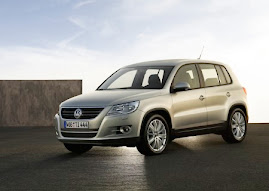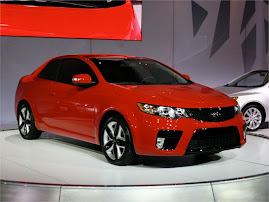
Turbocharging Adds Welcome Spice To This Handsome Soft-Roader 2011 Kia Sportage SX - Click above for high-res image galleryThere's no replacement for displacement. Ask any man or woman who dined on the muscle cars that Detroit was serving in the '50s and '60s, and they'll tell you to always order the largest engine offered if you want to have any fun. Thing is, that tired old axiom just isn't accurate in the modern era. Downsizing is what's for dinner these days.Before anyone older than 60 has a heart attack, know that the ever-escalating horsepower wars are alive and well. As it turns out, there is a replacement for displacement: technology. Take one part modern computers and the hundreds of sensors that feed them, add the classic trick of turbocharging and sprinkle on the relatively newfangled mechanical magic of direct injection, and you've got yourself one tasty recipe for performance. And you don't need a cup that measures power in cubic inches to get it.Look no farther for proof than Kia. The Korean automaker is working hard to change its hard-earned image of offering low-cost, basic transportation to something more like the sportier side of a dual-headed Korean conglomerate that also includes Hyundai. Its SX trim level is part of that plan, and the latest two vehicles to bear those letters only have a less-is-more strategy of power production on the menu. We've already sampled the turbocharged, direct-injected Optima SX and were left wanting seconds; now it's time to taste Kia's well-received and attractive compact crossover, the Sportage, in turbo flavor. Make no mistake, the biggest piece of the Sportage SX pie is its engine. Kia has managed to coax 260 horsepower (at 6,000 rpm) from just 2.0 liters, which is an impressive feat. Torque comes in at an equally impressive 269 pound-feet, delivered between 1,850 and 3,000 rpm. If that's not sounding all that special, consider what would happen if you could linearly double the engine size and output. Does 520 horsepower from 4.0 liters grab your attention?Granted, other automakers have met and even beaten that power-per-liter figure – General Motors reached that exact same level of horsepower with its turbocharged, direct-injected 2.0-liter Ecotec engine over five years ago, albeit with a bit less peak torque. Kia, however, has managed the feat while requiring only regular-grade gasoline. We applaud Kia for not requiring the finest of fuel (in terms of price) at the pump, even more so because we're not being asked to forsake any performance at the altar of 87 octane.We did ask officials on hand at the model's introduction in Phoenix if there would be a performance boost from using premium gasoline, but there isn't. We were told this engine was tuned from the very beginning to drink regular 87 octane, and while its computer system will indeed recognize when higher octane gas goes in the tank, the entire system has been optimized for regular. In other words, fill the tank with 87 octane and be thankful you don't have to pay extra for the privilege of having 260 horses underhood.What's more, the fuel economy penalty for all this extra power (the larger displacement standard 2.4-liter four-cylinder offers just 176 horsepower and 168 lb-ft of torque) isn't all that severe. The Environmental Protection Agency estimates the Sportage SX will return 22 miles per gallon in the city and 27 mpg on the highway in front-wheel-drive guise, and 21/25 equipped with all-wheel drive. Those figures equal the standard Sportage in the city, though owners will lose three to four mpg on the highway from the horsepower injection.It's also worth mentioning that the 2011 Kia Sportage SX shares its basic drivetrain with the Optima SX, which produces 274 horsepower. Why the output discrepancy? Kia explains that packaging issues in the Sportage required revised intake and exhaust routing, which in turn required slightly different tuning. Those changes resulted in a loss of 14 horsepower compared to the Optima, but peak torque remains the same.Those ponies are routed to the front wheels (all-wheel drive is optional) through a six-speed automatic transmission with a manual mode, but no steering wheel paddles (there is a +/- detent on the gearlever, however). We'd argue that any performance-minded machine should have paddle-shifters if no proper manual transmission is made available, but such arguments often fall on deaf ears at automakers that say they have solid business cases in hand saying otherwise. In any case, the six-speed automatic in the Sportage SX handles shifting duties well, though we predictably prefer snappier gear changes when driving aggressively, or better yet, a dedicated Sport mode.
Which brings us to our only real complaint about the drivetrain. As is typical with small displacement turbocharged engines, power doesn't begin to build until the twin-scroll turbocharger starts turning. It's laudable that peak torque comes on at just 1,850 rpm, but there's noticeable lag below that. From a dead stop, the torque converter does a good job of getting the boosted engine into its sweet spot, but if the Sportage SX is moving at anything below a walking pace, even adding some spice in its sauce won't generate any meaningful acceleration for a beat or two. That's certainly not a deal breaker, as such instances of sudden onset acceleration don't happen all that often in the real world, but it's something to keep in mind if you think those 260 horses are ready to run at all times.Once moving, the 2.0-liter engine feels very responsive and that broad torque spread allows it to haul the stylish little crossover into passing speed with nothing but a single downshift. Braking performance is similarly immediate, as the 11.8-inch ventilated front discs (up an eighth of an inch over non-turbocharged models) offer good initial bite and have plenty of reserve power for emergency situations. Steering manners are generally pleasant, though the feel and feedback from the electronic rack still doesn't match that of a well-tuned hydraulic unit. That said, we were accustomed to this artificial feeling from the front wheels after the first few miles and never really thought about it again.The Sportage SX also has a suspension tuned on the sporty side of the compact crossover segment. As observed over largely smooth Arizona roads, we wouldn't describe the ride as harsh, but it's firmly on the side of... firm, the benefit of which is well-controlled body roll. Interestingly, all-wheel-drive models also feature a lockable center differential, but that doesn't mean you should expect any real off-road capabilities. We happened to have a Trail Rated 2011 Jeep Patriot the same week we were testing the Sportage SX. Suffice it to say that the Sportage would not be Trail Rated were it wearing a Jeep badge. Not that it matters much – we can't imagine any Sportage SX buyer taking this turbocharged machine farther off the road than the rutted dirt parking lot at the local farmer's market. And if called for, the optional all-wheel-drive system will do a fine job of adding some security in bad weather conditions.Naturally, you will have to empty your piggy banks a bit more than the standard Sportage to drive home in a turbocharged SX. Base price for the front-wheel-drive SX is $25,795. All-wheel drive will cost you an extra $1,500. That may seem a bit expensive when compared to the $18,295 asking price for a base Sportage, but the SX is loaded up with all the same goodies as the upper-level EX trim, and the turbo engine option with all its assorted performance goodies adds a somewhat more reasonable $2,500 to the cost of an EX.The 2011 Kia Sportage SX rides, drives and generally behaves exactly like what it is: a Sportage with a welcome dash of horsepower. If you like the basic entree Kia offers in its compact 'ute but crave an optional V6 engine, you'll find a delicious substitute in the turbocharged, direct-injected 2.0-liter under its sculpted hood. - Autoblog













_(544x408).jpg)


No comments:
Post a Comment